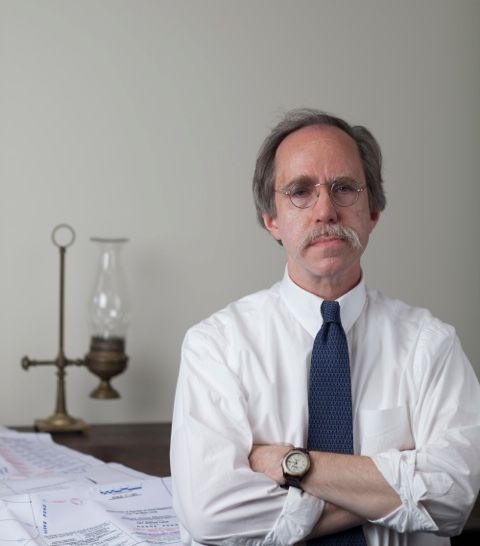The chassis of each Hilgen amplifier is stamped in black ink with a serial code consisting of one letter followed by four digits. Probably the stamp was a simple rubber stamp with rotating wheels that could produce advancing letters and numbers. It would have been convenient if the serial code provided a means of pinpointing the date on which each amplifier was completed. However, that does not appear to be the case.
Records from the Gentul Archive indicate that the serial number is just that: a number in a consecutive series. Every item of significance produced by Hilgen manufacturing was coded in the same manner (although items built for other vendors would not necessarily be stamped). For unknown reasons, I have never seen a Hilgen serial number that begins with "A." However, I have thus far seen serial numbers for most letters between, and including, "B" and"K."
It is unknown whether each letter was used for 9,999 items before the next letter was employed. The scarcity of Hilgen amplifiers, standing alone, renders that conclusion highly unlikely. In addition, the numbers following each letter do not seem to exceed 3,000 - 4,000. However, as will be discussed in further posts, Hilgen Manufacturing Co. did not just produce Hilgen amplifiers. I have already demonstrated that Hilgen built a significant number of Excelsior-branded amps (more about that in the future). Hilgen also produced large numbers of PA speaker cabinets for a third party; indeed, sales of the PA cabinets effectively subsidized production of the guitar amplifiers. Hilgen almost certainly built amplifiers branded as "Guyatone." In addition, Hilgen sold accessories such as amp covers and speaker cables. It is conceivable that the total number of items sold reached into the several tens of thousands.
The only thing that can be safely said about the serial codes, for the purposes of dating an amplifier, is that a chassis with a serial number beginning with "C" was completed after a chassis having a serial number beginning with "B." The latest items built by Hilgen, which carry serial numbers beginning with "K," appear to have been made in very late 1966 or early 1967. "B" serial numbers began in 1964. Thus, the letters "A" through "K" covered a period of only four years at most. It also appears that the letter "I" was not used in serial numbers.
If the owners of Hilgen amps were willing to send me both the chassis serial number and the codes for the speakers, potentiometers, reverb, can-type capacitors, pilot light fixtures, and any other component that carries a date code, it may become possible to narrow down the period during which a particular letter was used in a run of serial numbers.
Records from the Gentul Archive indicate that the serial number is just that: a number in a consecutive series. Every item of significance produced by Hilgen manufacturing was coded in the same manner (although items built for other vendors would not necessarily be stamped). For unknown reasons, I have never seen a Hilgen serial number that begins with "A." However, I have thus far seen serial numbers for most letters between, and including, "B" and"K."
It is unknown whether each letter was used for 9,999 items before the next letter was employed. The scarcity of Hilgen amplifiers, standing alone, renders that conclusion highly unlikely. In addition, the numbers following each letter do not seem to exceed 3,000 - 4,000. However, as will be discussed in further posts, Hilgen Manufacturing Co. did not just produce Hilgen amplifiers. I have already demonstrated that Hilgen built a significant number of Excelsior-branded amps (more about that in the future). Hilgen also produced large numbers of PA speaker cabinets for a third party; indeed, sales of the PA cabinets effectively subsidized production of the guitar amplifiers. Hilgen almost certainly built amplifiers branded as "Guyatone." In addition, Hilgen sold accessories such as amp covers and speaker cables. It is conceivable that the total number of items sold reached into the several tens of thousands.
The only thing that can be safely said about the serial codes, for the purposes of dating an amplifier, is that a chassis with a serial number beginning with "C" was completed after a chassis having a serial number beginning with "B." The latest items built by Hilgen, which carry serial numbers beginning with "K," appear to have been made in very late 1966 or early 1967. "B" serial numbers began in 1964. Thus, the letters "A" through "K" covered a period of only four years at most. It also appears that the letter "I" was not used in serial numbers.
If the owners of Hilgen amps were willing to send me both the chassis serial number and the codes for the speakers, potentiometers, reverb, can-type capacitors, pilot light fixtures, and any other component that carries a date code, it may become possible to narrow down the period during which a particular letter was used in a run of serial numbers.

 RSS Feed
RSS Feed